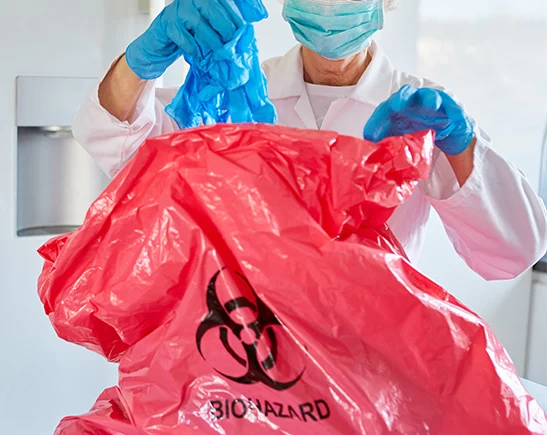Benefit at Your Doorstep: Situating Reliable Medical Waste Removal Near Me
Benefit at Your Doorstep: Situating Reliable Medical Waste Removal Near Me
Blog Article
Exploring Various Garbage Disposal Options for a Cleaner Setting
In the quest of a cleaner atmosphere, the administration of waste disposal has actually arised as a crucial focal factor for lasting development. With a wide variety of waste disposal choices offered, ranging from standard landfill approaches to ingenious waste-to-energy technologies, the option of how we handle our waste has far-ranging implications for our world's health.
Recycling Techniques
Executing effective recycling techniques is crucial in reducing waste and promoting sustainability in our setting. Reusing entails the process of transforming waste products into reusable items to prevent unnecessary disposal.
Another crucial recycling approach is composting, which involves disintegrating organic waste like food scraps and yard trimmings into nutrient-rich dirt. This process not just draws away natural waste from landfills but additionally produces a valuable resource for horticulture and farming. Additionally, upcycling is an imaginative recycling approach that includes changing old or thrown out products right into items of greater top quality or value. By incorporating these numerous recycling techniques into our waste administration methods, we can dramatically lower our environmental footprint and relocate towards a much more sustainable future.

Composting Strategies
Reliable waste administration techniques, such as recycling techniques, pave the method for a cleaner setting, and now, changing the focus to 'Composting Techniques', we discover sustainable means to disintegrate organic waste for ecological advantage. medical waste removal.
Composting is an all-natural procedure that changes natural waste, like food scraps and backyard trimmings, into a nutrient-rich soil amendment. The trick to effective composting depends on developing the right balance of environment-friendly products, such as vegetables and fruit scraps, and brown products, like dried out fallen leaves and twigs. These materials disintegrate with the help of bacteria, damaging down the waste into important garden compost.
There are numerous composting techniques readily available to suit different demands. Standard yard composting includes layering natural materials in a bin or pile and on a regular basis turning the combination to aerate it. Vermicomposting, on the other hand, uses worms to break down raw material into garden compost (click here). For those with restricted room, interior composting systems offer a hassle-free service. By utilizing composting strategies, we can reduce the quantity of waste sent to garbage dumps while producing a useful product for enriching dirt and sustaining plant development.
Incineration Cons and pros
Incineration, as a garbage disposal technique, provides both advantages and disadvantages that warrant careful consideration in the world of sustainable waste management techniques. On the silver lining, incineration can significantly reduce the volume of waste, decreasing the demand for garbage dump space and possibly reducing greenhouse gas emissions. Incineration also permits the healing of energy through the generation of electrical energy or warm, adding to source recuperation. Furthermore, the process can be used to destroy unsafe materials, providing a safe technique for dealing with specific sorts of waste that may position dangers to public wellness and the environment if left unattended.
However, there are notable drawbacks to incineration. One significant problem is the possible release of hazardous toxins right into the air, such as dioxins, hefty metals, and particulate matter, which can have adverse results on human wellness and the environment. In addition, the high preliminary financial investment and functional prices of incineration facilities position financial obstacles, making it a much less affordable choice contrasted to various other waste management techniques. Cautious surveillance and law are necessary to minimize these negative influences and maximize the benefits of incineration as component of a comprehensive waste monitoring strategy.
Landfill Management Techniques
Land fills play an important role in waste monitoring and environmental conservation by supplying a containment system for the disposal of solid waste products. Effective land fill management techniques are important to minimize ecological effects and make sure the long-lasting sustainability of these waste disposal sites. One key technique appertains waste compaction to take full advantage of making use of offered area within the garbage dump (click here). By compacting the waste, the quantity is reduced, permitting more waste to be suited with time.
Additionally, the implementation of daily cover practices is vital in decreasing smells, protecting against clutter, and minimizing the attraction of parasites. Treatment the disposed waste at the end of every day helps to have smells and avoid potential ecological contamination. Additionally, the monitoring of land fill gas discharges and leachate levels is essential in ensuring that ecological requirements are met which any kind of possible dangers to surrounding ecosystems are decreased.

Waste-to-Energy Technologies
Among the cutting-edge strategies to throw away management involves utilizing Waste-to-Energy innovations to transform strong waste right into useful power sources. Waste-to-Energy (WtE) technologies include a variety of procedures that intend to extract power from waste products via thermal, chemical, or organic means. This conversion process not just lowers the volume of waste that finishes up in landfills but additionally generates important power resources such as electricity, warm, or biofuels.
There are several techniques of Waste-to-Energy conversion, consisting of gasification, incineration, and pyrolysis. Incineration includes melting waste at high temperatures to create warm and electrical power. Gasification converts waste right into a syngas, which can be utilized for power generation or chemical production. Pyrolysis breaks down natural materials using high temperature levels in the lack of oxygen, creating bio-oil, char, and gas.
Executing Waste-to-Energy technologies can aid reduce ecological problems associated with typical garbage disposal techniques while all at once supplying an eco-friendly power resource. Nevertheless, careful consideration should be offered to emissions control and making sure the sustainability of feedstock supplies for these modern technologies to be really advantageous for a cleaner setting.

Conclusion
To conclude, checking out numerous waste disposal alternatives such as recycling, composting, incineration, land fill monitoring, and waste-to-energy technologies is vital for promoting a cleaner setting - click here. Each technique has its very own advantages and difficulties, yet by utilizing a combination of these techniques, we can function towards minimizing the quantity of waste that finishes up in land fills and eventually add to an extra lasting future for generations to find
With a wide variety of waste disposal options readily available, varying from traditional garbage dump methods to cutting-edge waste-to-energy technologies, the selection of he said just how we handle our waste has significant effects for our planet's well-being. medical waste disposal.Incineration, as a waste disposal approach, presents both advantages and negative aspects that merit mindful consideration in the world of lasting waste monitoring practices.Garbage dumps play an important role in waste management and ecological preservation by supplying a containment system for the disposal of solid waste products. By condensing the waste, the volume is reduced, allowing for more waste to be suited over time
One of the cutting-edge approaches to waste administration includes using Waste-to-Energy technologies to convert strong waste right into functional power resources.
Report this page